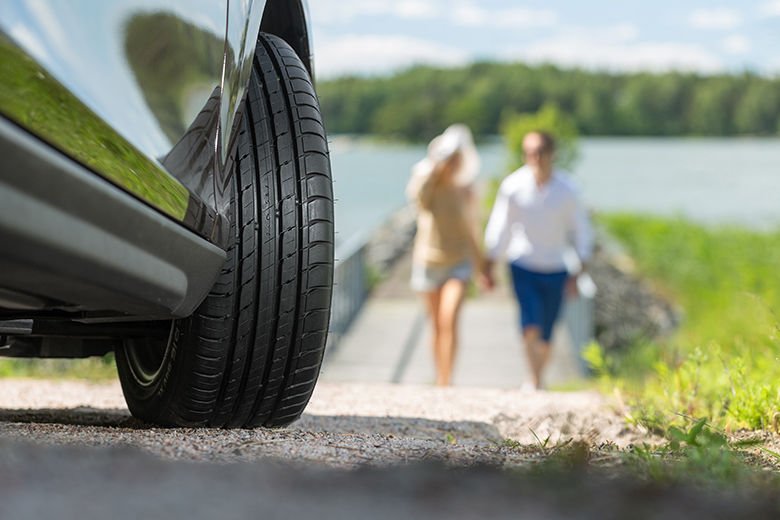Tyre Tips For Summer Motoring

So, the sunshine is finally here (albeit intermittent!) as spring draws to a close and we get ready for another British heatwave (ahem!). Many drivers in the UK opt for winter tyres during the colder months and then switch to summer tyres when the weather improves. Regardless of whether you do this or not, it’s worth inspecting your tyres to make sure they are ready for any summer road trips that you may be embarking on.
Here’s how:-
1. Visually inspect each tyre for bulges, cuts or abnormalities that could be dangerous when travelling at speed and, worst case scenario, could cause a blowout. Check both the tyre tread (where possible) and the sidewalls.
2. Check your tyre pressures to make sure that they are in line with the recommended vehicle manufacturers specifications and adjust if necessary. Tyre pressure information is usually found on a label inside one of the door jambs or in the vehicle handbook. Whilst checking tyre pressures, inspect your tyre valves for any signs of wear and tear or cuts in the rubber. If you have metal or TPMS valves, a general visual inspection should suffice. Always replace the valve caps to prevent water and dust ingress into the valve stem and to prevent air from escaping. If valve caps are missing, you can buy replacements here!
3. Check that the tread on your tyres is wearing evenly across the entire surface of the tyre. If it isn’t, it could be an indication of an underlying issue with your suspension or your wheel alignment (tracking) may just need to be adjusted. This can be carried out at any high street tyre fitting centre.
4. Next, check the age of each tyre. This is shown by a four-digit number embossed on the tyre sidewall; the first two digits denote the week of the year that the tyres were made, and the second two digits denote the actual year of manufacture. It is a good idea to replace tyre(s) that are more than ten years old, regardless of their condition.
5. And finally, check your spare tyre. This is often overlooked but the last thing you want is to get a puncture only to discover that your spare tyre is damaged or even missing! Also make sure that the tyre changing kit is present and in full working order. Many modern vehicles have an inflator kit or are fitted with run flat tyres instead of a spare tyre but, if none are available, invest in some tyre sealant as an emergency backup which should, at least, get you to a tyre fitting centre.
Last but not least, enjoy your summer and journey safely!
If you would like to receive regular updates and further motoring hints and tips, please JOIN OUR MAILING LIST. Don’t worry, we promise not to bombard you with junk mail!
